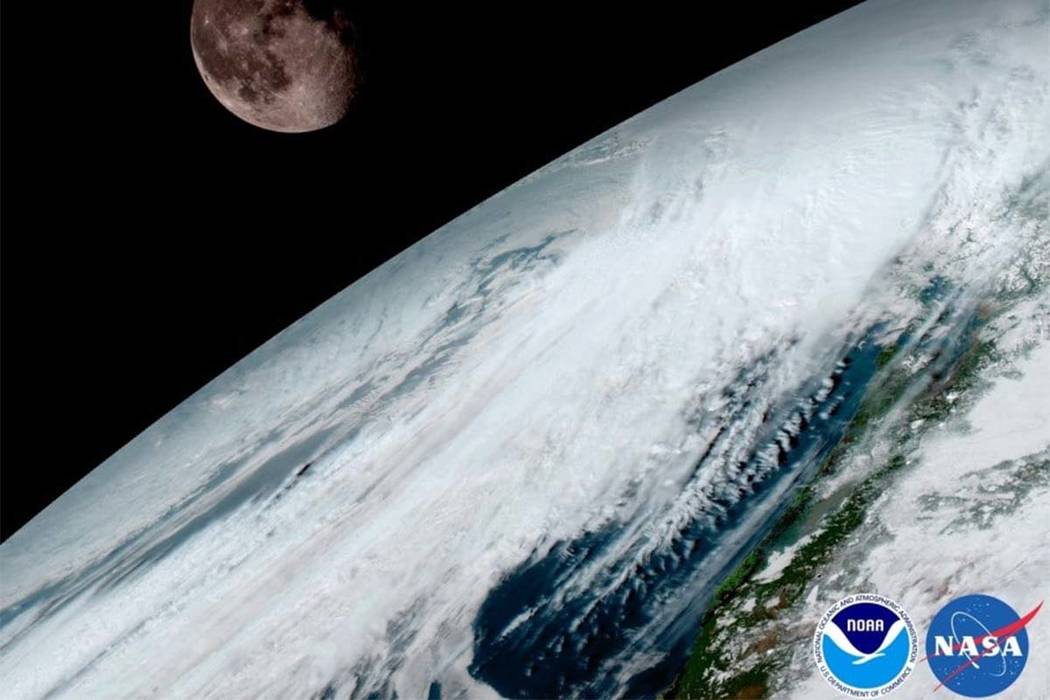Crazy weather under watchful eye of next-generation satellite
Between the hurricanes raging through the Caribbean and the Gulf of Mexico and the massive wildfires roaring out West, 2017 has been quite a year for inclement weather in the United States. By some measures, it’s been historically intense.
And watching it all unfold is a new, next-generation, multimillion-dollar satellite. Launched from Cape Canaveral at the end of 2016, the National Oceanic and Atmospheric Administration’s GOES-16 arrived in orbit just in time to capture a string of weather events matched this year in tumultuousness only by the political situation on the ground in Washington.
GOES-16 is equipped with two weather-related instruments: The first is a lightning mapper designed to continuously record all the lightning strikes across and around North America. Fed into weather models, this lightning data will help forecasters more quickly predict flash floods and tornadoes that often occur alongside lightning bursts.
The second piece of weather equipment is a camera called the Advanced Baseline Imager (ABI). Capable of scanning an entire hemisphere in just five minutes, the ABI offers twice the resolution of any other NOAA satellite in orbit.
Though GOES-16 will not be fully operational until next month and “its data are preliminary and undergoing testing,” NOAA has whetted the appetite of meteorologists and amateur weather enthusiasts with the satellite’s high-quality images from space during a series of catastrophic weather events.
The new satellite transmitted its first images back to Earth in January, and they are stunning.
As the name suggests, GOES-16 is one in a series of weather satellites used by NOAA. The three members of the GOES (standing for Geostationary Operational Environmental Satellite) series monitoring U.S. weather are nearing the end of their life span. New generation satellites are in production and the events of this past summer should only help bolster their case for deployment and funding. It feels as though the destruction of California wine country and the Texas coast demands the best documentation possible.
And, boy, does GOES-16 deliver.
The next-gen satellite was there for the more pleasant moments of 2017 too, capturing the shadow of the moon as it traced its way across the continential United States during the eclipse.
The Post’s Angela Fitz saw the satellite firsthand for its journey from Colorado to Florida at launch:
“I arrived with two dozen Lockheed Martin engineers and technicians, safety specialists and quality assurance experts at 4:45 a.m., to transport NOAA’s next major weather satellite to Kennedy Space Center. It’s the project this team has been tirelessly working on for more than two years, and they want to see it fly.
“Their final product is a towering monument of technology. GOES-R is the size of a small school bus. It weighs about 6,300 pounds. Transporting the behemoth is a challenge, but it needs to get to Florida.”
What’s next? The Trump administration’s proposed budget cuts to NOAA have rattled meteorologists who rely upon the agency’s data for studying and forecasting weather. But amid the cuts, the president’s budget does prioritize the GOES program, according to the American Institute of Physics. NOAA is sticking to launch dates for the next three next-gen weather satellites, scheduled between 2018 and 2024.






















